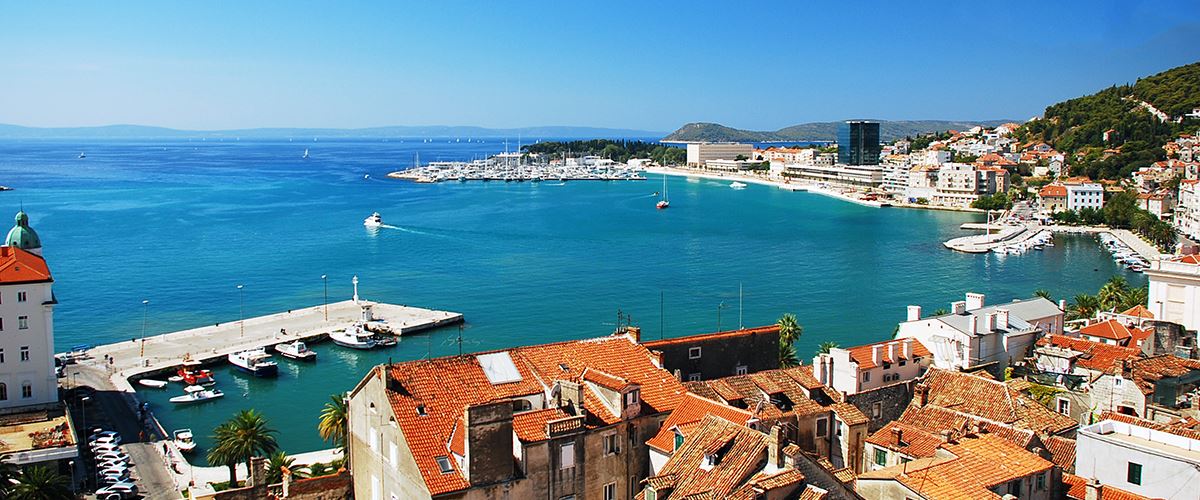Split to Split | Route 2

We will inform you about Split to Split Destination. Please contact us if you have any questions.
Split – Maslinica

Maslinica is the only settlement on the island of Šolta’s western coast and the first destination of the route Split to Split. It’s many exquisitely wind-shielded coves and inlets, and its mini-archipelago of seven isles, make Maslinica an extraordinary nautical, diving, and underwater fishing destination. Its most visited cove is the Šešula cove, due to its excellent position and protection it provides.
Maslinica – Skradin, National Park Krka

Skradin is a city with history 6000 years long, owing to its unique location in the central Adriatic, at the mouth of the Krka river. Since the time of the ancient Liburnians, the Greeks and Romans, and the Croatian princes of old, the Skradin area were vital to the road and maritime routes passing through here from all four directions.
It would take up several times to describe all the places of historic significance in the Skradin area, them being constructed on top of each others’ remains through 6000 years of civilization. The nearby Krka waterfalls, today a Croatian National Park, are all the more reason not to miss out on Skradin. Today’s Skradin Marina continues to serve sailors, in a tradition that goes back, even beyond the time of the origins of the city itself.
Skradin – Vodice – Jezera (Murter)

The history of the town of Vodice goes back to ancient times, with archaeological evidence telling us it has been inhabited even before the 4 th century B.C. It was a prominent settlement in Roman times, since the glass pottery collection discovered here is one of the most luxurious found anywhere in the old Roman Empire.
The rich local history continued through Medieval times and the Turkish invasions, with Vodice first mentioned by that name in the 15 the century. Many sites and monuments testify of the long, rich history of Vodice. Today, Vodice is the most renowned tourist center of the Central Adriatic, with gastronomic and cultural offerings and range of options for recreation, as wide as you can imagine.
Vodice – Žut

The largely uninhabited island of Žut is part of the Kornati National Park. With a surface of 15 km2 and only 2 km in width, it is very well indented and an excellent nautical destination.
In the cove of Pod Ražanj there is a modern marina with some 100 well-protected berths; and in the largest cove of Žut, the ACI Marina is located, housing 120 berths. Žut is, as are all of Kornati, a site of pristine natural beauty, and a standard stop in any nautical odyssey through the Adriatic.
Žut – Piškera

Piškera is the oldest seasonal fishing settlement in Croatia, meaning it has been inhabited (mostly by fishermen) only during main fishing seasons. It blossomed in the 16 th century, due in part to the fresh water sources on the island itself and its neighboring isles. Today, Piškera shares the fate of many other old fishing villages in the Adriatic; it has become a tourist destination, closely focused on nautical tourism.
Adjacent to Piškera, on the north coast of the isle of Panitula Vela, the ACI Marina Piškera is located, housing 150 berths together with all the accompanying content. Together with the similar marina on Žut, Piškera is the center of the Middle Adriatic nautical tourism.
Piškera – Primošten

The Primošten region has faced numerous migration crises throughout its history due to its important strategic location. It first got its current name in 1564. And by that time it was a fortified settlement on a small island. After the Turkish threat ended, the hardworking people of Primošten worked to develop their town. Thus, they preserved the heritage of the island and succeeded.
It is one of the safest places to anchor in the Adriatic. It has the Kremik marina with over 400 berths. Today Primosten is a very beautiful tourist area.
Primošten – Trogir – Split

Trogir is truly a city museum. It is the best-preserved Romanesque-Gothic city in all of Central Europe. It has castles surrounded by stone walls. The most important cultural monument is the Trogir cathedral. The western gate Portal, built by master Radovan, represents the most monumental piece of Romanesque-Gothic sculpture in Croatia.
Trogir has many cultural-historical monuments and narrow streets. It also excites its visitors with its many art collections that include countless masterpieces. The city of Trogir, on an island and connected to the mainland by stone bridges. ACI marina is located opposite the city of Trogir. Trogir riviera has rich Mediterranean vegetation. For example, there are vineyards, olive groves, many islands and bays, pebble, and sandy beaches. In addition, the pristine coastline is very suitable for sailors.
